Science History Institute
Dedicated in Philadelphia, Pennsylvania on June 10, 2023
The Science History Institute aims to expand knowledge and challenge perspectives in the history of chemistry, engineering, and the life sciences. Through a wide range of programming, the Institute reveals how developments in these fields are embedded in our daily lives, while seeking to preserve and recount the stories of innovators and discoveries that are shaping our world.
Located in Philadelphia — just two blocks from the site where the Declaration of Independence and the Constitution were signed — the Institute preserves and interprets the history of science through multiple platforms: the Othmer Library of Chemical History, Distillations magazine and podcast, an award-winning museum, an oral history center, and the Beckman Center for the History of Chemistry. The Institute makes the history of science accessible to the public, while researchers use its resources for their own studies and publications.
Contents
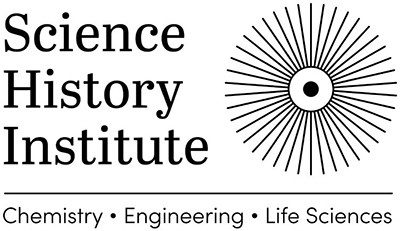
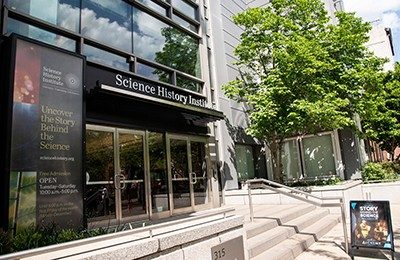
A modest start
In September 1979, the Division of the History of Chemistry (HIST) of the American Chemical Society (ACS) proposed creating a center focused on preserving and celebrating the history of chemistry. Other professional groups, including those for physicists and engineers, had established programs to capture and share their histories. HIST members concluded the time was right to create a center focused on collecting, cataloging, and sharing the important contributions of chemists — contributions that too often were overlooked and underappreciated.
This interest within ACS coincided with a parallel effort by Arnold Thackray, founder of the History and Sociology of Science Department at the University of Pennsylvania. Thackray wanted to build a history center on the foundation of the Edgar Fahs Smith Memorial Collection at Penn. Home to one of the first chemical plants built in the U.S., and a longtime hub for the U.S. chemical industry, Philadelphia was a natural choice for the location. Members of HIST joined forces with Thackray to persuade ACS and the university to support the new venture. Under Thackray’s leadership, the Center for History of Chemistry opened on the Penn campus in 1982. It was the world’s first organization devoted solely to the historical study of chemistry and related sciences and technologies.
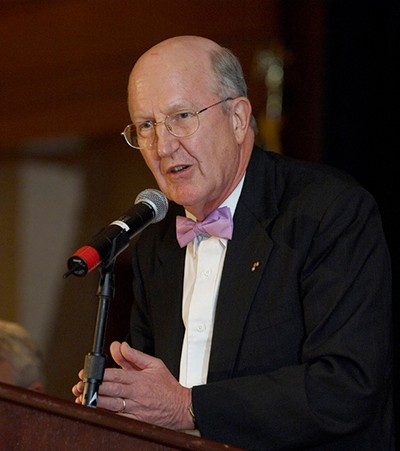
Expansion
The American Institute of Chemical Engineers became an additional sponsor of the center in 1984, and by 1987 the center was incorporated as a nonprofit entity called the National Foundation for the History of Chemistry. It was renamed the Chemical Heritage Foundation in 1992 to better reflect its interdisciplinary nature and the widening scope of its programs and activities. Thackray served as the founding president and led the organization for 25 years, moving it from Penn’s campus to a historic building in the heart of Old City Philadelphia in 1996.
In 2015, the Chemical Heritage Foundation merged with the Life Sciences Foundation, a California-based nonprofit also founded by Thackray and committed to educational outreach in the history of the life sciences. Two of the largest branches of modern science and technology were now joined in one organization with a focus on the fields’ historical importance. Reflecting its new breadth of focus, in 2018 it became the Science History Institute.
In 2022, the Institute became the host of the executive office of the History of Science Society (HSS), which is dedicated to understanding the history of science and its cultural influences. This new partnership, formed in collaboration with Penn’s History and Sociology of Science Department, demonstrates the Institute’s unique capacity for bridging the academic and public-facing worlds. HSS plans to launch its inaugural summer school program at the Institute in 2023, offering courses in the history of science and in science and technology studies to humanities scholars.
Today, the Science History Institute stands at the intersection of science and society. The heart of the Institute is its collections, which include print books, documents, artifacts, photographs, films, digital resources, fine art, and oral history interviews.
The Institute uses exhibitions, scholarly events, public programs, and digital outreach to show the vital roles that science and technology play in shaping the world and the ways in which the scientific fields’ histories are crucial to the future. And it’s reaching a large audience: In 2022 alone, the Institute’s website, social media channels, virtual symposia, lectures, workshops, and special events drew more than 1.5 million views in over 200 countries. An additional 8,000 people attended in-person programs.
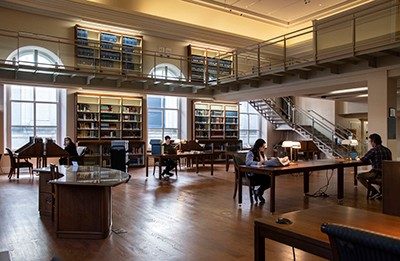
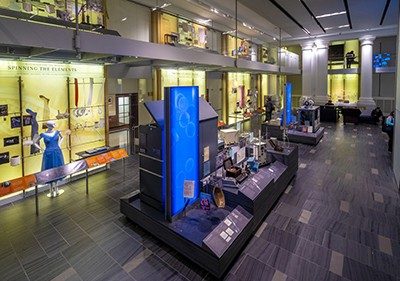
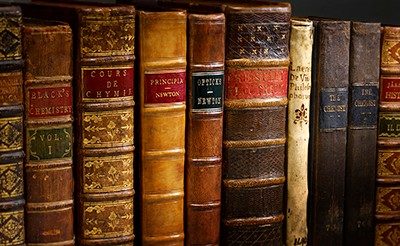
Library and archives
The Institute’s Donald F. and Mildred Topp Othmer Library of Chemical History holds a wealth of resources. More than 160,000 volumes document the histories of chemistry, chemical engineering, and the life sciences. It was founded in 1988 when Donald and Mildred Topp Othmer announced a challenge grant for the creation of a library to preserve the history of the chemical sciences. This world-class collection contains more than 7,700 rare books and unique manuscripts dating from the 15th century onward. It includes one of the world’s most comprehensive collections of rare books related to the study of alchemy and early chemistry, as well as manuscripts written by Sir Isaac Newton.
The library’s archives department comprises collections of papers from many influential scientific organizations, such as the International Union of Pure and Applied Chemistry, the Chemists’ Club of New York City, and several ACS divisions, along with the corporate collections of such chemical giants as The Dow Chemical Company, Aldrich Chemical Company, and Rohm & Haas Company.
The archives also contain the personal papers of numerous Nobel laureates, including Alan MacDiarmid, who received a Nobel Prize in 2000 for finding that certain plastics could conduct electricity, and Paul Flory, a polymer chemist who received a Nobel Prize in 1974 for his work on macromolecules, which include DNA, RNA, and proteins, along with lipids and carbohydrates. Additionally, over 50,000 historical photographs and films in the archives document laboratories, people, and processes. Much of the archives’ content is preserved and offered in digital formats, allowing students and scholars easy access to these valuable collections.
New materials are acquired every year. For example, archivists are actively collecting materials related to the life of Percy Lavon Julian, a Black research chemist and pioneer in the chemical synthesis of medicinal drugs from plants. In a 1956 letter in the archives, Julian writes to the president of ACS to critique the organization’s decision to hold a national meeting in the segregated South and for including in the promotional materials a list of “Hotels for Colored Persons.”
The papers of Georg and Max Bredig are another important acquisition. This collection, smuggled out of Nazi-occupied Germany, tells the story of noted father and son German Jewish chemists and their family’s struggle to live through the Holocaust. Thanks to a recent grant from the Council on Library and Information Resources, the entire correspondence has been digitized, transcribed, and translated into English. It is available in the Institute’s digital collections.
The many stories in this collection, and others that reveal how professional networks became lifelines to surviving war or exile, have led the Institute to focus on developing programming around the history of science and U.S. immigration.
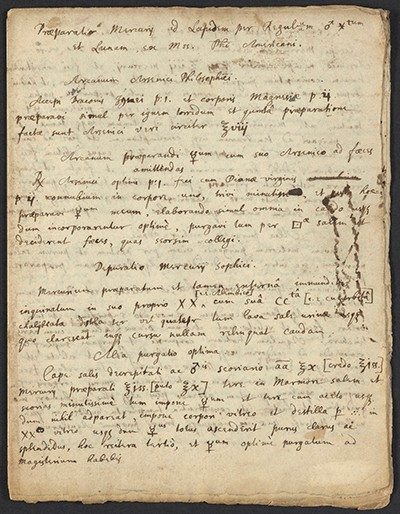
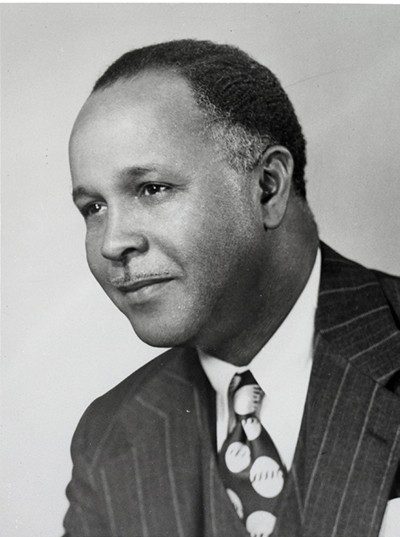
Museum
The Institute’s museum, named one of the city’s best by Condé Nast Traveler in 2022, is free and open to the public. Located in modern facilities behind the original 1865 façade of the First National Bank at 315 Chestnut Street, the museum houses a collection of 6,500 artifacts, including 900 paintings and works on paper relating to alchemy and emerging science in early modern Europe (1500-1800).
It hosts a permanent exhibition chronicling the past 500 years of chemical innovation. Objects on display include early distillation glassware, an oil painting of Robert Boyle (the “father of chemistry”), and original artifacts that exist because of chemical discoveries, such as a nylon dress. Each year the museum hosts a temporary exhibition in its Hach gallery. The 2022-23 exhibition, “Downstream,” explores more than 200 years of water analysis and protection in the Delaware Valley and beyond.
The centerpiece of the museum experience is the “object explorer” — a pair of 65-inch interactive touchscreen tables that allow visitors to delve into the history and science of familiar objects. More than a dozen recognizable plastic pieces are available to explore, including an oven mitt, LED light bulb, and flip-flop. Placing an object on the touchscreen unlocks a vibrantly illustrated story about that object’s history. The object explorer tables provide a self-guided, interactive experience for visitors of all ages, supplementing the museum’s regularly offered gallery tours and scavenger hunts.
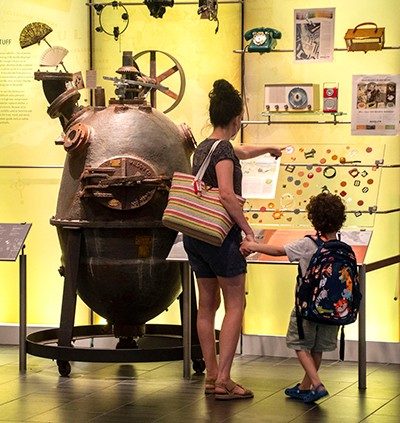
Beckman Center for the History of Chemistry
The Beckman Center is home to the Institute’s fellowship program, which hosts around 20 scholars in residence each year. The Center was named in 1987 in recognition of an Arnold and Mabel Beckman Foundation grant that was designed to expand the Center for History of Chemistry into a research institute. Today, researchers travel from all over the world to use the Othmer Library’s collections and take part in the Beckman Center’s vibrant scholarly community. The Center provides various research opportunities, including 12-month postdoctoral fellowships, nine-month dissertation-writing grants, four-month fellowships for established scholars, and one- to four-month fellowships for anyone whose independent research could benefit from using the Institute’s collections. The Center also offers two-year curatorial fellowships in which fellows are integrated as members of Institute staff to assist with storytelling projects.
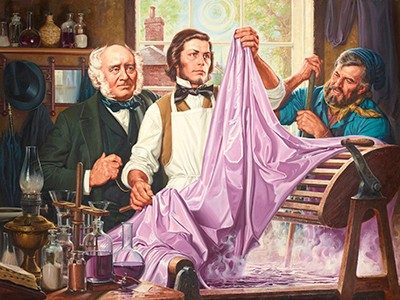
Distillations
Distillations is the Institute’s acclaimed digital platform, which includes magazine articles, podcasts, and videos. Each essay delves into untold stories and unveils a new perspective on the relationship between science and society. Its unique approach to science-based storytelling has garnered widespread recognition. Notably, O, The Oprah Magazine recognized Distillations as one of the “20 Best History Podcasts That’ll Make You Rethink What You Learned in School.”
Distillations articles range widely, from alchemical quests for immortality to the use of rare earth elements in technology to other topics. For instance, “A Study in Scarlet” recounts the story of a young man who walked into a hospital with blood gushing from his nose, staining his clothes red. The doctors were stumped, unable to explain the cause of his symptoms. As it turned out, the man had been exposed to rat poison, and his survival led to the development of the lifesaving blood thinner, warfarin.
A very different story, “Ruth Patrick’s Lovely Creatures,” focuses on her pioneering work on biodiversity and its connection to the health of streams. Patrick invented a device that collects diatoms, which are photosynthetic algae. Since different species tolerate different levels of pollution, Patrick used her device and the tiny organisms to gauge water pollution levels.
Center for Oral History
The Institute’s Center for Oral History has emerged as a national authority on oral history methodology. It houses a robust collection of more than 1,200 audio recordings of interviews with notable people, including Nobel laureates and National Medal of Science recipients, dating back to 1979.
Among the interviews in the collection, nearly 100 feature women, including Stephanie Kwolek. After earning her bachelor’s degree in chemistry at Carnegie Mellon University in 1946, she joined Dupont as a polymer chemist. Later in her career, she was tasked with finding fibers that could withstand extreme conditions. Through her research, Kwolek discovered that rodlike polyamides could, under certain conditions, line up to form liquid crystalline solutions. Her work involved synthesizing high-molecular weight aromatic polyamides, dissolving them in solvents, and spinning these solutions into fibers that were strong and rigid. The resulting fiber she created became known as Kevlar.
The Center also boasts a collection of interviews with scientists who served on the Presidential Council of Advisors on Science and Technology. One example is Shirley Mahaley Malcom, who grew up in the segregated South, attending an all-Black high school in Alabama. Despite her exceptional grades, she knew she would not be able to attend a university in Alabama. Consequently she enrolled at the University of Washington, Seattle, where she studied zoology. She later earned a Ph.D. at Pennsylvania State University. Malcom dedicated the majority of her career to the American Association for the Advancement of Science and served as a presidential advisor for Bill Clinton.
The Institute’s Center for Oral History also hosts popular week-long oral history training sessions in Philadelphia and at major universities around the U.S. The recent shift to virtual programming has resulted in a global audience of diverse attendees, including participants from Native American communities, China, Australia, and Germany.
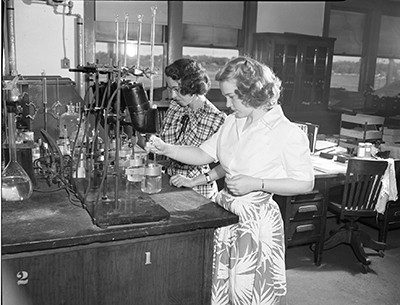
Future directions
As the Science History Institute celebrates the 40th anniversary of its founding, it continues to enhance its reputation as a world-leading resource for preserving the history of chemistry and related fields. Through its library and museum, the Institute remains committed to telling stories and building collections in the fields of chemistry, engineering, and the life sciences through physical as well as digital means.
This history-making enterprise will feature increasingly rich and compelling historical accounts of scientific phenomena, interpreting important moments of investigation and discovery while also enriching our understanding of the complex, diverse systems of people and circumstances that produce them. The Institute’s activities will be broad in scope, illuminating the origins and development of significant scientific achievements, as well as training a critical lens on past theories and practices. As the Science History Institute looks to its future, its collecting, research, curating, and storytelling will reflect diverse historical perspectives and a recognition of the interests of a burgeoning global audience for the history of science.
How to find the Science History Institute
315 Chestnut St.
Philadelphia, PA 19106
sciencehistory.org
Landmark dedication and acknowledgments
Landmark dedication
The American Chemical Society (ACS) honored the Science History Institute with the National Historic Chemical Landmark (NHCL) designation in a ceremony at the Institute on June 10, 2023. The commemorative plaque reads:
The Center for History of Chemistry opened on the University of Pennsylvania campus in 1982, with support from the university and the American Chemical Society. The American Institute of Chemical Engineers became an additional sponsor in 1984. It was renamed the Chemical Heritage Foundation in 1992 and moved to its present site in 1996. After merging with the Life Sciences Foundation, it was renamed the Science History Institute in 2018, reflecting its broad interdisciplinary mission. The Institute’s Othmer Library of Chemical History, museum, oral history center, Beckman Center for the History of Chemistry, and digital offerings help scholars and the public understand the role of science and technology in shaping society’s past, present, and future.
Acknowledgments
Written by Michal Meyer and Michelle DiMeo.
The authors wish to thank contributors to and reviewers of this booklet, all of whom helped improve its content, especially members of the ACS NHCL Subcommittee.
The nomination for this Landmark designation was prepared by the Institute and the ACS History of Chemistry Division.
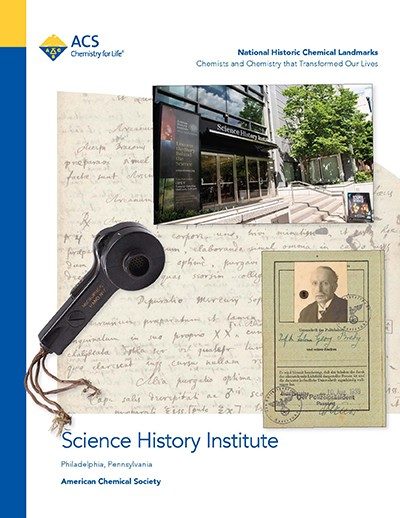
Booklet PDF

